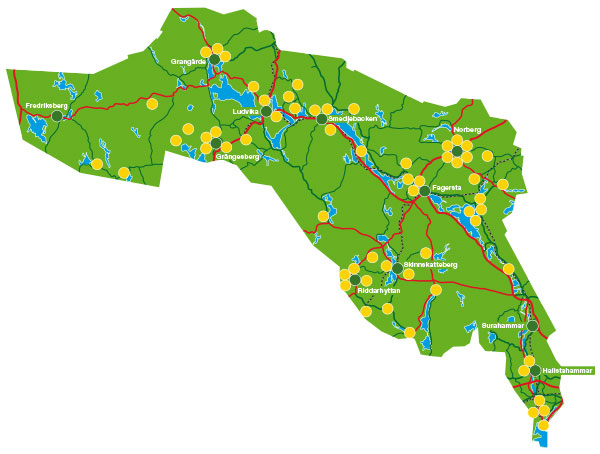Bergslagen
With Bergslagen is called the Central Swedish Mining District, which was, in medieval times of great economic importance. Bergslagen comprises the eastern part of Värmland, north of Västmanland and Orebro, western parts of Uppland and the south of Dalarna.
In the Middle Ages, when operating mining on a large scale, were for the areas around the mines own privileges and regulations, so-called bergslagar ( lagar, sv, plural of lag - dt: . Law ), enacted to conflicts between agriculture and the to avoid needs of mining or mineral processing. From the 16th century the name was bergslagen applied to the area itself.
The area is rich in disused mines, which are now museums, such as in the town of Norberg, Falun ( now a World Heritage Site), Skinnskatteberg and iron or copper smelters, as Engelberg ( also a World Heritage Site), Riddarhyttan and Others
1986 Ekomuseum Bergslagen was founded as a network consisting of six municipalities and two provincial museums in Dalarna and Västmanland. The Ekomuseum supervised about 60 historical sites from Strömsholms castle in the lake Mälaren Strömsholms and in the south, as far as Fredrik Berg och Ludvika in the north.
In other places, still mining ( Garpenberg: zinc, lead, copper) is or iron and steel processing operation.










